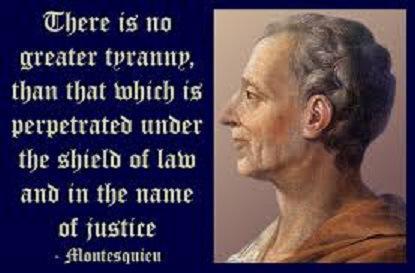
Speech crime has come to America.
Did you know that the city of New York has a Human Rights Law?
It’s called the New York City Human Rights Law (NYCHRL), the enforcement of which is by a bureaucracy called the New York City Commission on Human Rights (henceforth, the Commission).
The purpose of the city’s Human Rights Law is to prohibit discrimination in employment, public accommodations, and housing on the basis of gender. But NYCHRL has a specific, politically-correct definition for gender as one’s “actual or perceived sex and shall also include a person’s gender identity, self-image, appearance, behavior or expression, whether or not that gender identity, self-image, appearance, behavior or expression is different from that traditionally associated with the legal sex assigned to that person at birth.”
The Commission has an elaborate, detailed legal enforcement guide for the Human Rights Law, which you can read here. The guide includes:
Definitions
1. Cisgender: an adjective denoting or relating to a person whose self-identity conforms with the gender that corresponds to their biological sex, i.e, someone who is not transgender.
2. Gender Identity: one’s internal deeply-held sense of one’s gender which may be the same or different from one’s sex assigned at birth. One’s gender identity may be male, female, neither or both, e.g., non-binary. Everyone has a gender identity. Gender identity is distinct from sexual orientation.
3. Gender Expression: the representation of gender as expressed through, for example, one’s name, choice of pronouns, clothing, haircut, behavior, voice, or body characteristics. Gender expression may not be distinctively male or female and may not conform to traditional gender-based stereotypes assigned to specific gender identities.
4. Gender: an individual’s actual or perceived sex, gender identity, self-image, appearance, behavior, or expression, whether or not that gender identity, self-image, appearance, behavior or expression is different from that traditionally associated with the sex assigned at birth.
5. Gender Non-Conforming: an adjective sometimes used to describe someone whose gender expression differs from traditional gender-based stereotypes. Not all gender non-conforming people are transgender. Conversely, not all transgender people are gender non-conforming.
6. Sex: a combination of bodily characteristics including chromosomes, hormones, internal and external reproductive organs, secondary sex characteristics, and gender identity. Most people are assigned male or female at birth based on the appearance of their external genitalia.
7. Intersex: a term used to refer to a person whose reproductive or sexual anatomy and/or chromosomal pattern does not fit typical definitions of male or female. There are many different medical diagnoses or conditions that an intersex person may have.
8. Transgender: an adjective used to describe someone whose gender identity or expression is not typically associated with the sex assigned at birth. It can be used to describe people with a broad range of identity or expression. Someone who identifies their gender as androgynous, gender queer, non-binary, gender non-conforming, MTF (male to female), or FTM (female to male) may also consider themselves to be transgender.
From the above list of definitions, do you now have a clear idea of what “gender” is, or what “sex” is, or how “gender” is different (or not) from “sex”?
No?
I don’t have a clear idea either.
What I got from the definitions is that a person’s subjective feelings trump all — even over biology. One can be whatever “gender” or “sex” (it turns out the two terms are interchangeable, with both meaning “the person’s subjective identity or perception”) he or she “thinks” or “perceives” himself or herself to be. The trick is that the New York City Human Rights Law demands that everybody else must conform to that person’s subjective “gender identity,” and if you don’t, you’ve committed “gender discrimination” and can be prosecuted.

Gender-based discrimination/harassment
Under NYCHRL, “gender discrimination” is defined as “discrimination . . . based on one’s perceived or actual gender identity, which may or may not conform to one’s sex assigned at birth, or on the ways in which one expresses gender, such as through appearance or communication style. Gender discrimination is prohibited in employment, housing, public accommodations, discriminatory harassment, and bias-based profiling by police and exists whenever there is disparate treatment of an individual on account of gender. When an individual is treated ‘less well than others on account of their gender,’ 8 that is gender discrimination under the NYCHRL.”
Note that “less well than others” is not defined.
Furthermore, gender discrimination can be “harassment” that is “motivated by gender,” that is “when the incident or behavior creates an environment or reflects or fosters a culture or atmosphere of sex stereotyping, degradation, humiliation, bias, or objectification” — all loaded terms.
This is where the Commission’s legal guide becomes tyrannical.
As examples of gender-based harassment, the guide includes the following:
- Unwanted sexual advances or requests for sexual favors;
- Comments, unwanted touching, gestures, jokes, or pictures that target an individual based on gender
- Refusal to use a transgender employee’s preferred name, pronoun, or title.
Examples of violating #3 include:
- Repeatedly calling a transgender woman “him” or “Mr.” after she has made clear which pronouns and title she uses.
- Calling a transgender woman “Mr.” because her appearance “is aligned with traditional gender-based stereotypes of masculinity.”
- Refusing to call a transgender woman her preferred name, Jane, because her identification says that her first name is John.
- Refusing to permit individuals to use single-sex facilities, such as bathrooms or locker rooms, and participate in single-sex programs, consistent with their gender identity (or perception), regardless of their sex assigned at birth, anatomy, medical history, appearance, or the sex indicated on their identification — even if other people, including customers, object to the transgender using the single-sex facility like a bathroom.
- Requiring a transgender or gender non-conforming individual to provide proof of their gender in order to access the appropriate single-sex program or facility.
- Imposing different uniforms or grooming standards based on sex or gender.
Penalties
The Commission can impose civil penalties up to $125,000 for violations, and up to $250,000 for violations that are the result of willful, wanton, or malicious conduct. (Note that neither “willful” nor “wanton” nor “malicious” is defined.)
I expect any day now, we will be required by law to call someone a bunny rabbit or “it” because he “identifies” and “perceives” himself to be a rabbit. After all, if Americans believe in “transgender,” why not “transrace” or “transspecies”?
H/t LifeSiteNews
~Eowyn

